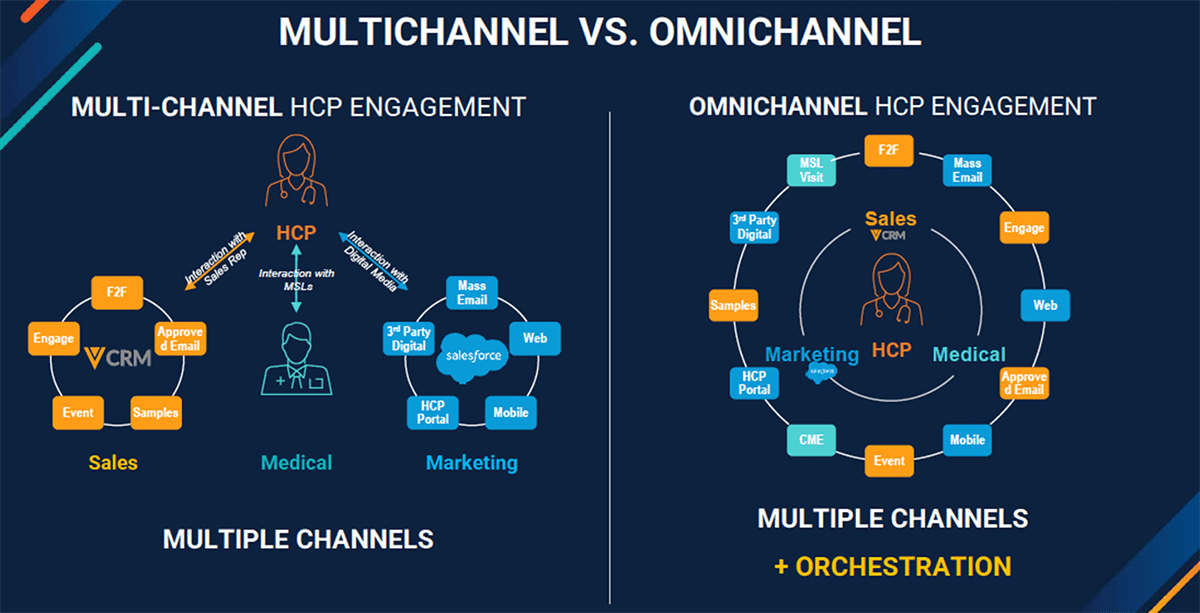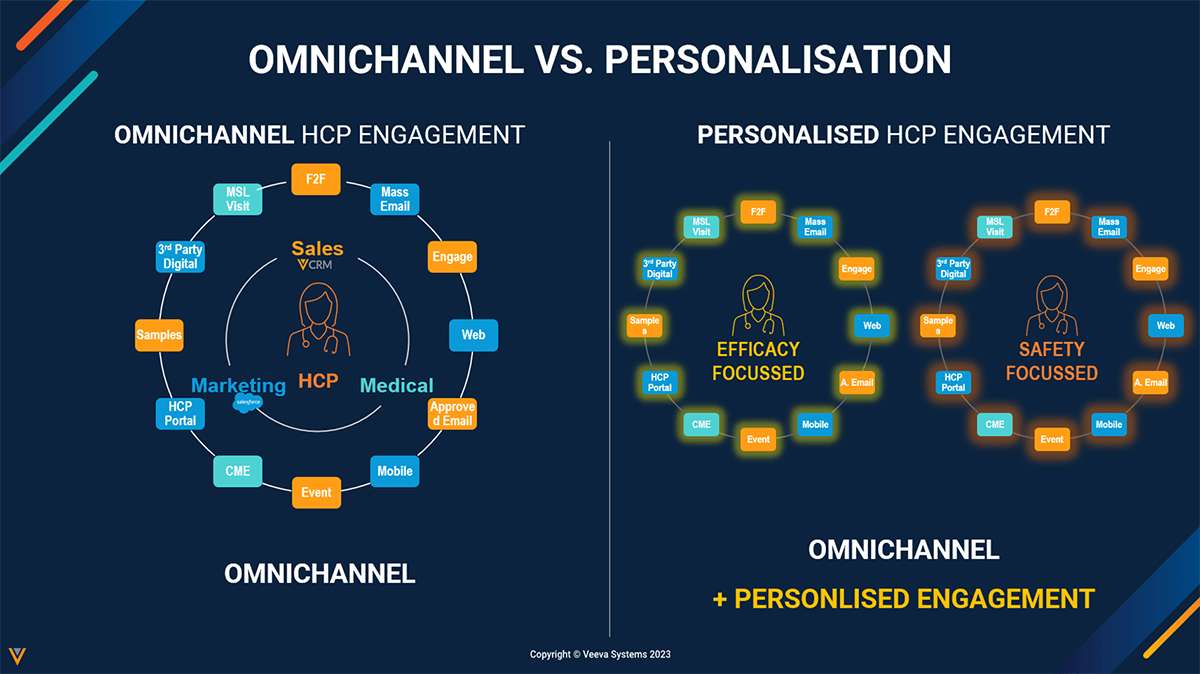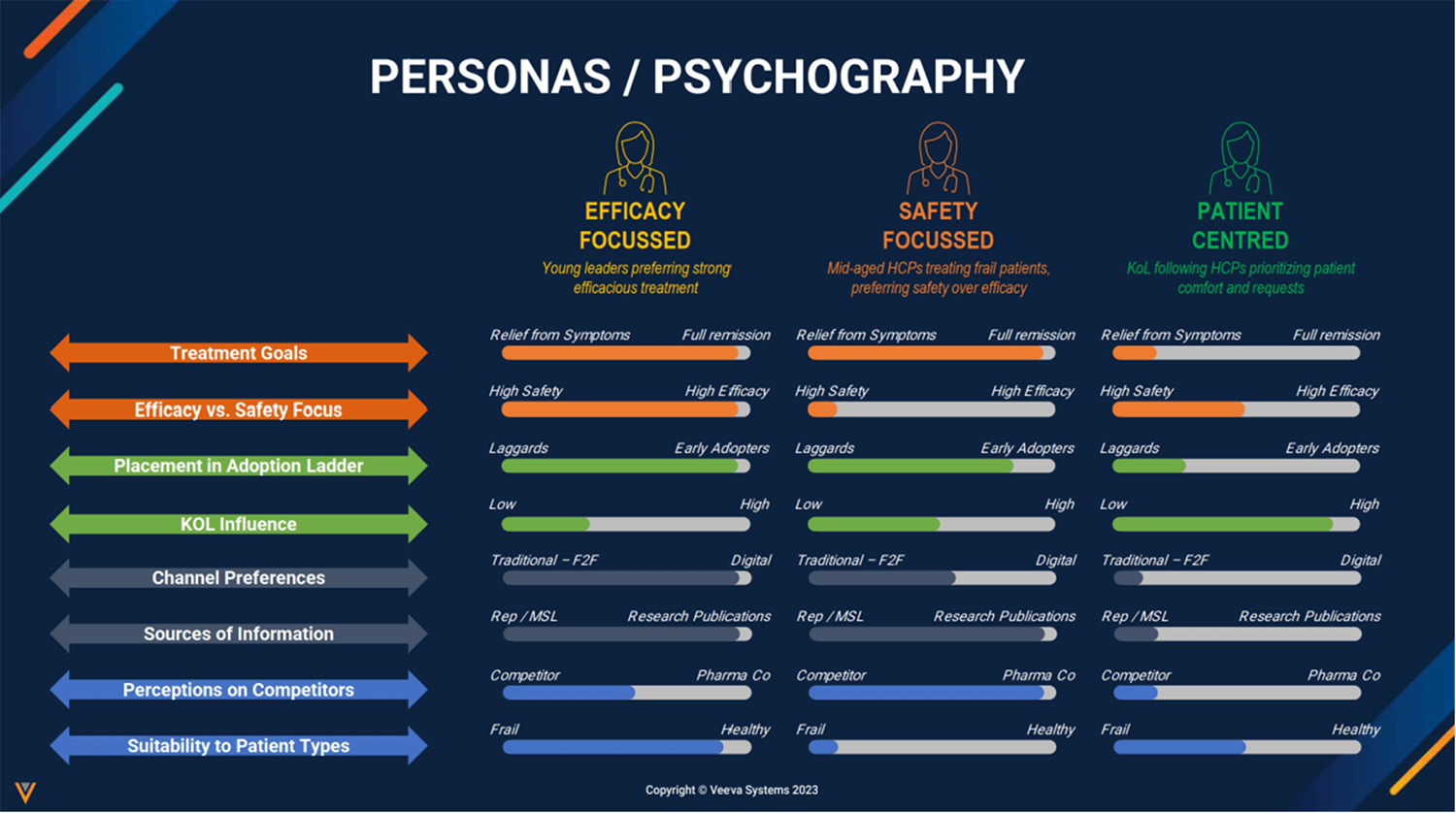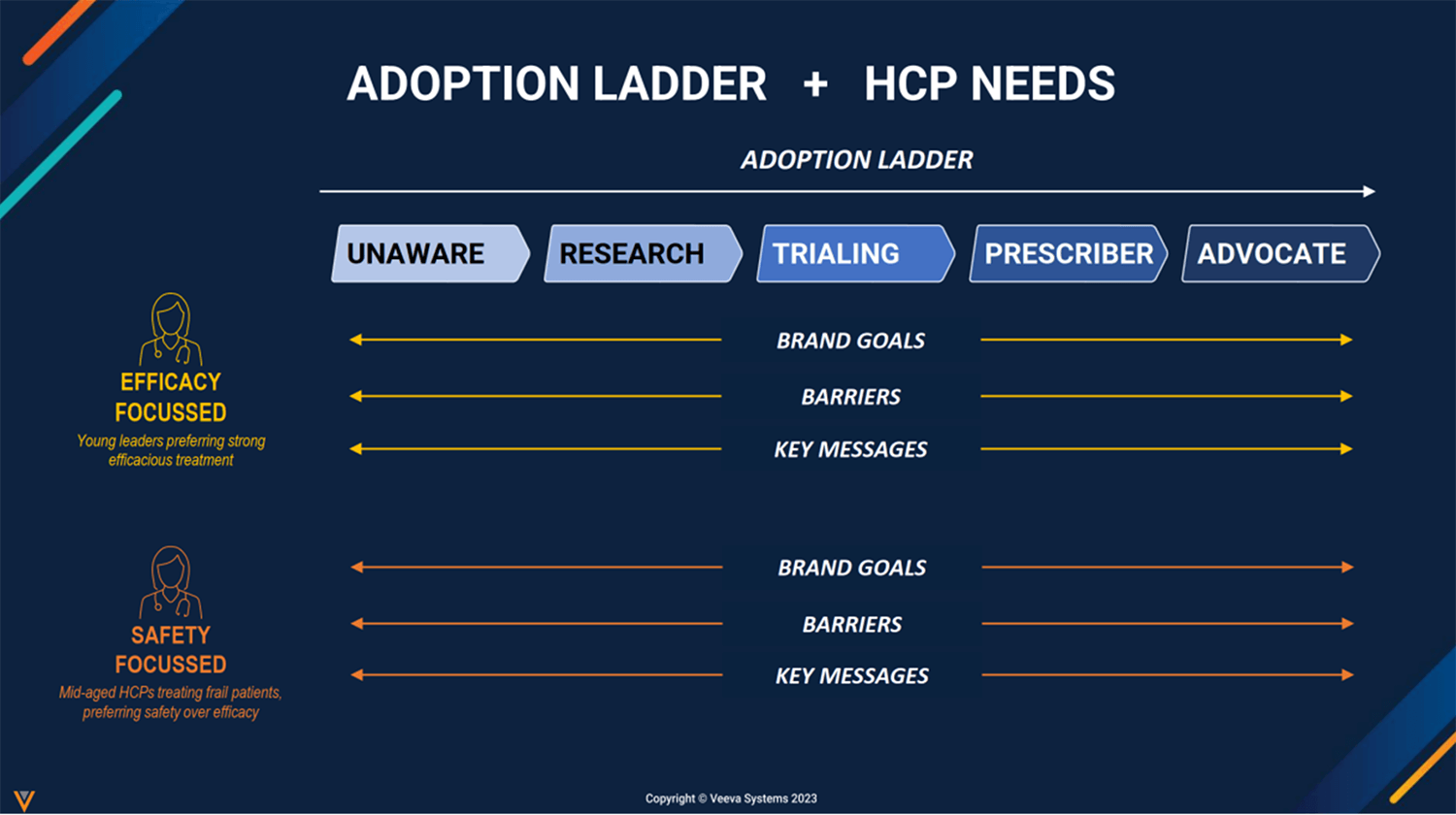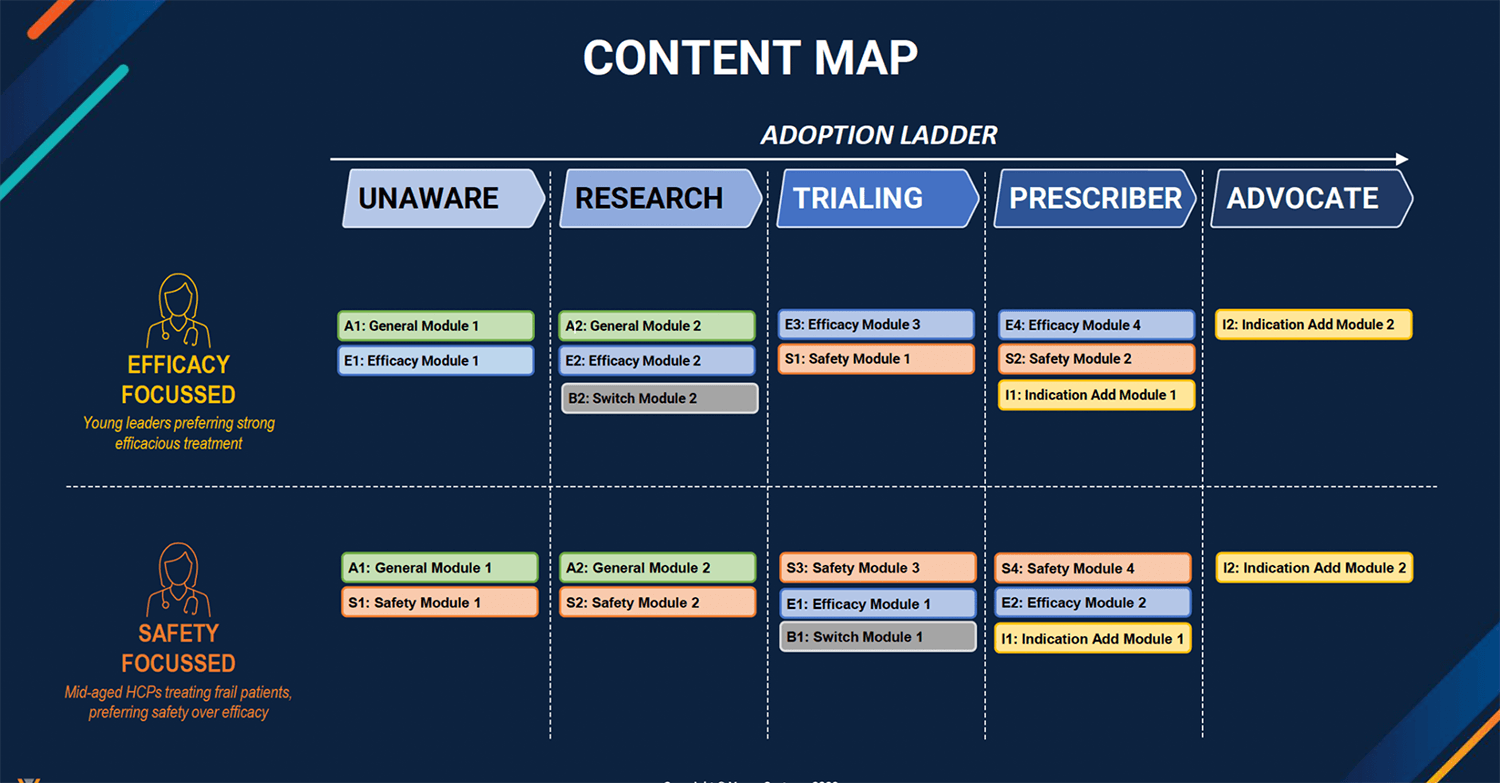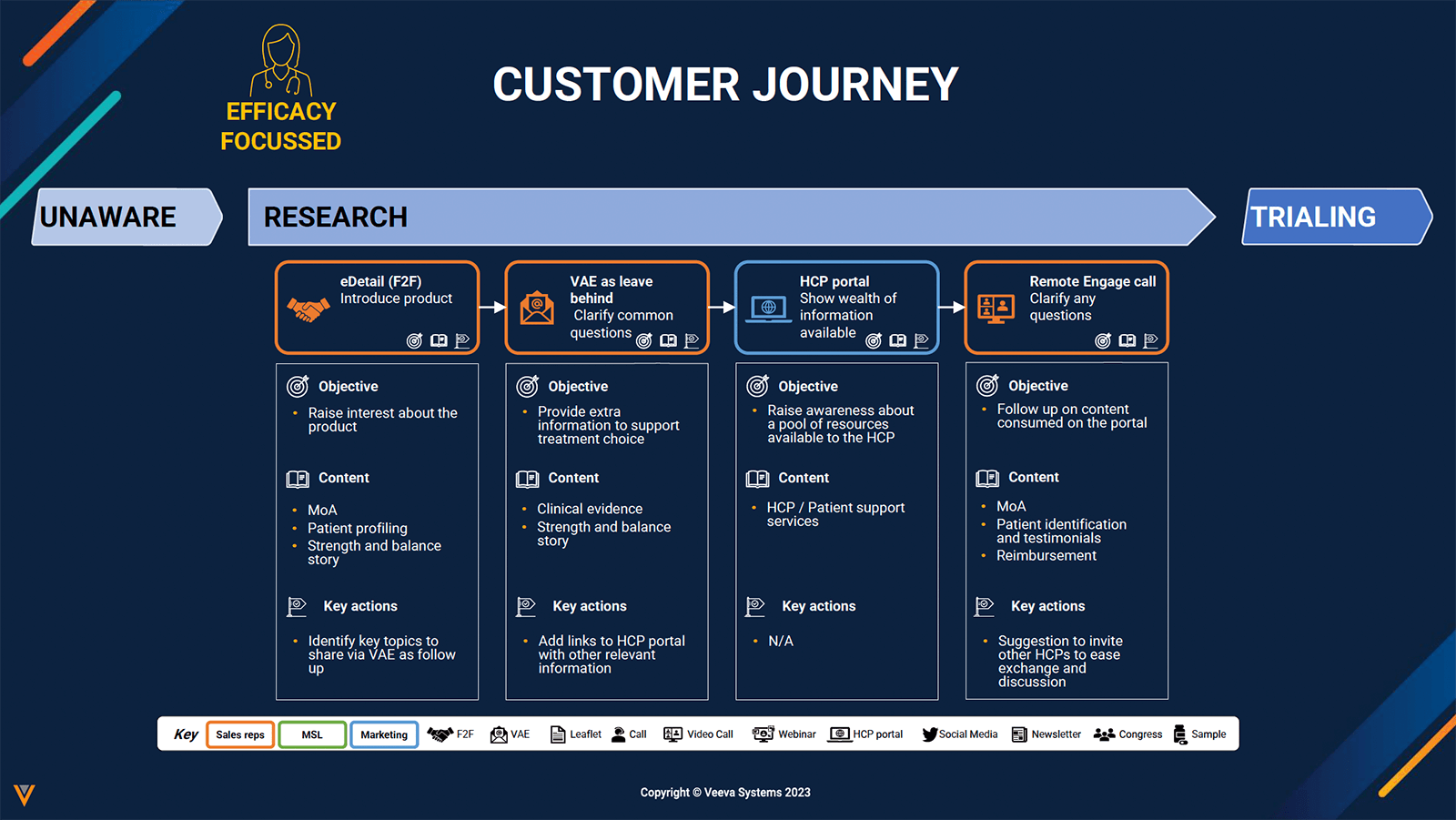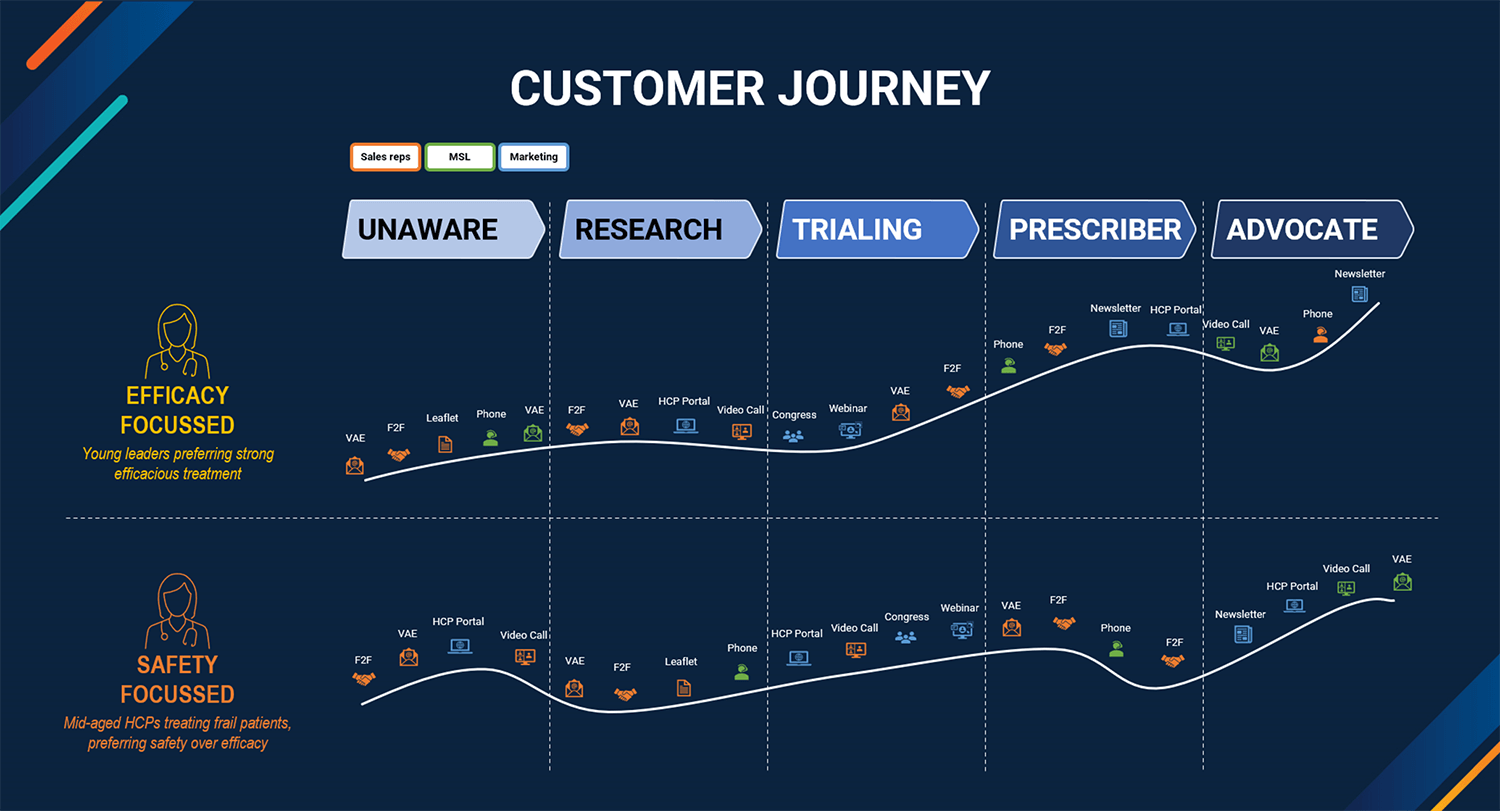Driving HCP Personalization at Scale
When it comes to engaging with healthcare professionals (HCPs), personalization, omnichannel and multichannel strategies are key buzzwords. But what do these really mean, and how can biopharma companies tailor experiences for HCPs and achieve their business objectives? We recently held a webinar for our customers and explored solutions, which we will cover in this article.
Figure 1
Figure 1.1
Multi-channel HCP engagement refers to sales, medical and marketing teams engaging with HCPs on multiple channels, from in-person events, to digital such as emails. These channels are often unorchestrated and scattered, which means they are unable to deliver a single consistent experience to the HCP. For instance, sales representatives may interact with HCPs on multiple channels, while medical teams also separately engage with the same HCPs, which could result in confusion and different layers of communication.
When it comes to Omnichannel HCP engagement, HCPs are looped into multiple channels that are orchestrated cohesively by sales, marketing and medical teams, illustrated in Figure 1. However, having an omnichannel strategy isn’t enough in today’s day and age, given the multitude of channels and the extent of information shared. Biopharmas need to have in place a personalized HCP strategy (Figure 1.1) to provide a great experience for the HCPs they engage with, and ultimately drive market share.
How do companies drive personalised HCP strategy at scale
With thousands of HCPs to engage with in various markets, it is important to be able to do this at scale. At Veeva, we have observed many successful biopharma engagements occur in line with five key components:
- Understanding HCP personas/psychography
- Understanding the HCP adoption ladder
- Understanding HCP needs
- Developing a content map
- Developing a customer journey
Figure 2
In determining HCP personas, we need to consider various dimensions that can help really understand how HCPs think and make decisions (e.g. treatment approach, their adoption attitudes
information-seeking attitudes and attitudes around competitors). As the word “persona” indicates, it is about understanding the personality of the HCP – and a personality has many dimensions.
E.g. Figure 2 demonstrates three illustrative persons of HCP created using select eight dimensions.
Figure 3
But individual HCPs in a persona may still have varying behaviors depending on their current understanding and perception about available treatment options. Hence it is critical to place HCPs in a persona on a continuum (adoption ladder). Think of an adoption ladder (Figure 3) as just a progression of HCPs current understanding and behaviour in a persona.
Once we have defined the adoption ladder, we can start understanding the needs and barriers for each persona by each individual stage in the adoption ladder. Are they currently unaware of what the treatment offers, or do they need more information and data to be convinced? Are they trialling the product or prescribing and advocating for the brand? These are important aspects of the adoption ladder to consider.
Figure 4The next stage is the content map, where different types of content would be shown to HCPs depending on their persona and their needs across different stages of the adoption ladder. For example, for an efficacy-focused young leader who prefers strong and effective treatments for patients, we would offer them information or studies on treatment efficacy to consider. And as for safety-focused HCPs who prefer safety over efficacious treatment, we would prioritize sharing safety-related information with them.
Figure 5
At this stage we have a thorough understanding of HCP personas, their needs at various stages in the adoption ladder, and the required content we need to leverage for each persona at each stage of adoption ladder. We can now start putting down the actual HCP engagement touchpoint for each persona and each step in the adoption ladder (Figure 5).
Figure 6
Now when we piece these touchpoints for each persona across the different stages of the adoption ladder, we get a tailored engagement customer journey for each persona, across all channels and teams, based on HCPs needs and requirements (figure 6)
What this means for biopharmas in reality
In practice, a HCP customer journey could be complex and heavily dependent on many factors, especially if a HCP does not follow the intended journey. This is where the sales representatives come in, to provide guidance on where the HCP is in the adoption ladder, and what actions we can take to help the HCP progress and achieve our intended objectives.
Solutions like Veeva CRM can help sales representatives in orchestrating an omnichannel, personalized strategy. Veeva serves more than 1,000 customers, helping companies ranging from the world’s largest life sciences companies to emerging biotechs to achieve field success.
To learn more about Veeva’s solutions and approach towards omnichannel strategies and HCP personalization, please reach out to us at sushant.aggarwal@veeva.com or shafi.hussain@veeva.com.

